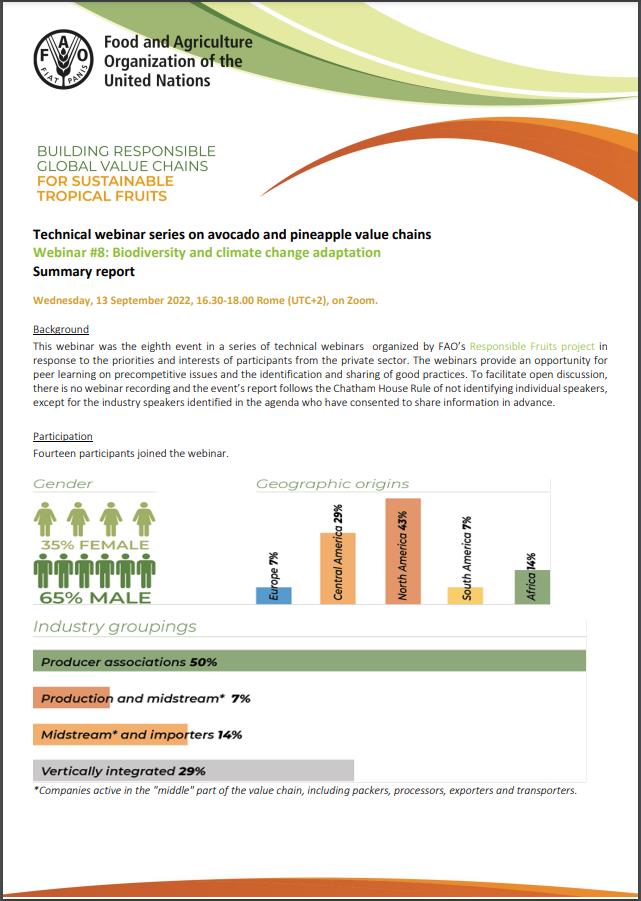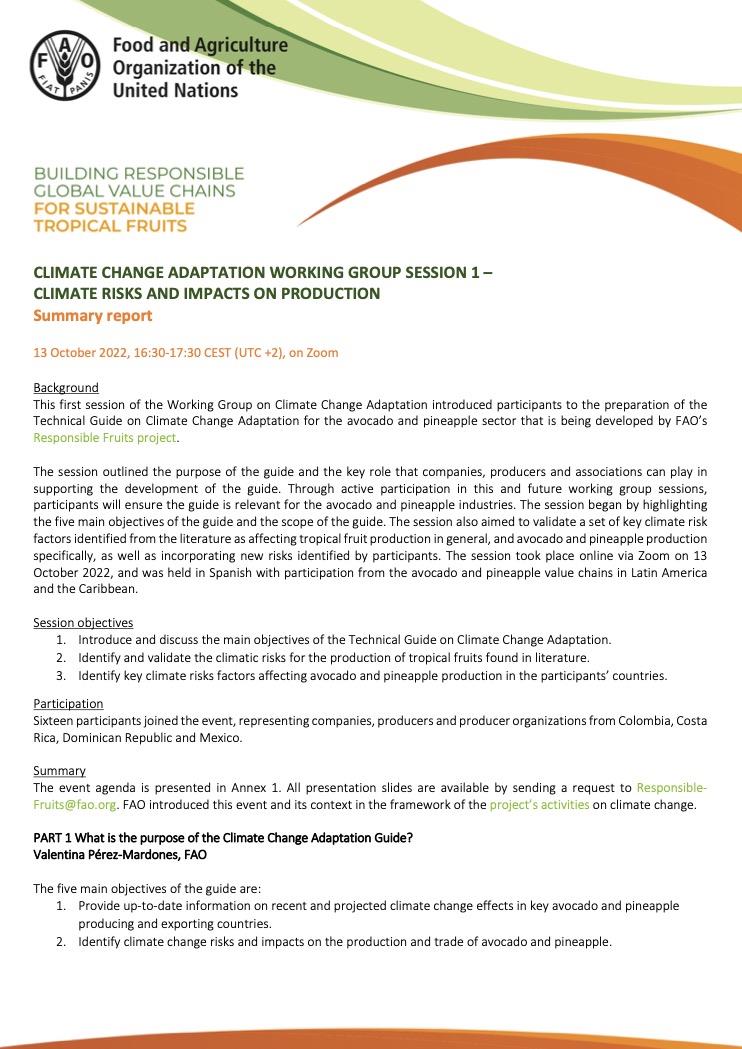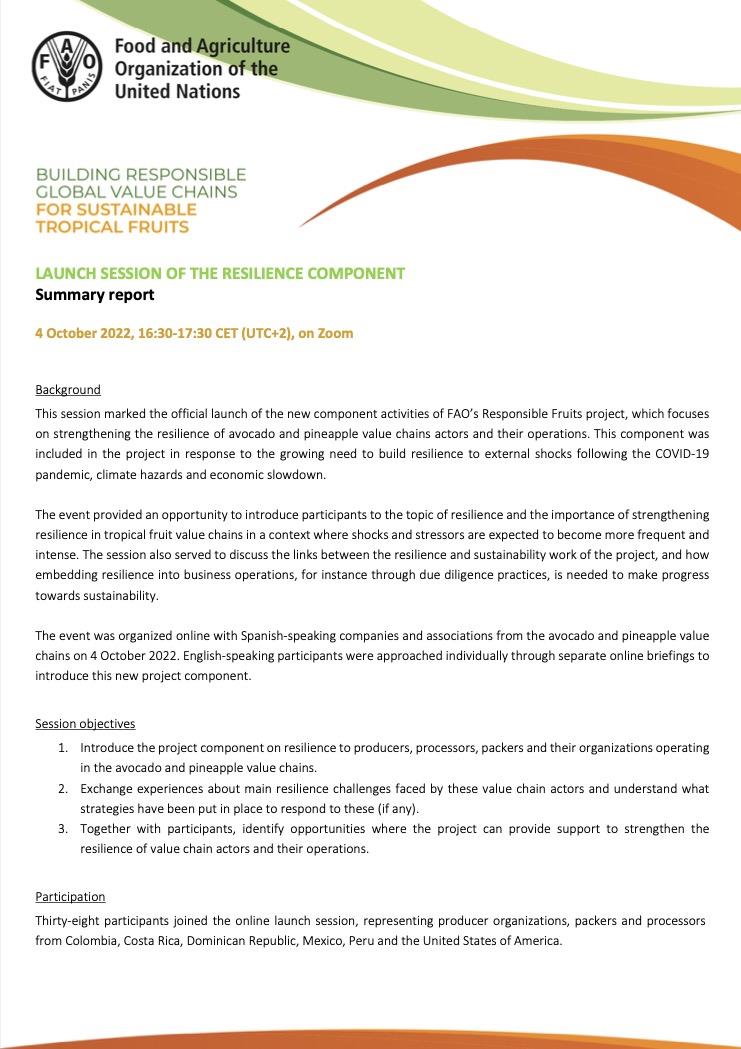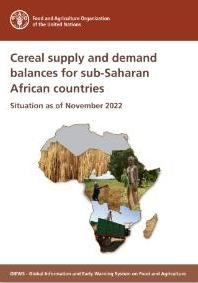
Cereal supply and demand balances for sub-Saharan African countries - November 2022
02/12/2022
The cereal supply and demand balances included in this report present a subset of data from the FAO/GIEWS Country Cereal Balance System (CCBS). The CCBS is a is a unique database created and continuously kept up to date by the Global Information and Early Warning System on Food and Agriculture (GIEWS) and Basic Foodstuffs teams of the Markets and Trade Division, with data since 1980. It contains annual supply and utilization balances for the main cereals produced and consumed for over 220 countries/areas, from which (sub) regional and global aggregates are drawn. This report is based on information available as of November 2022.
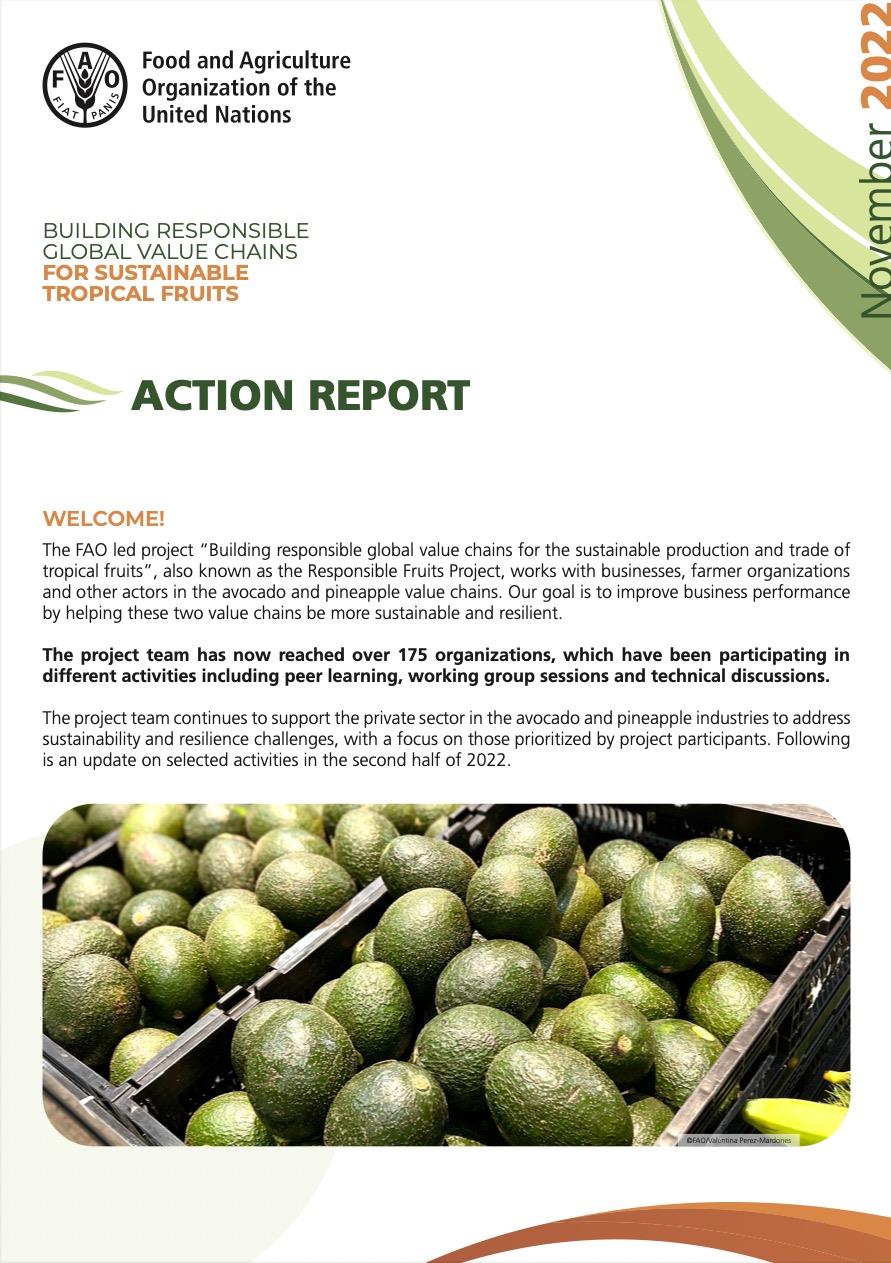
Action Report November 2022: Responsible Tropical Fruits Project
01/12/2022
The FAO led project “Building responsible global value chains for the sustainable production and trade of tropical fruits” (GCP/GLO/022/GER) works with businesses, farmer organizations and other actors in the avocado and pineapple value chains. Our goal is to improve business performance by helping these two value chains be more sustainable and more resilient. The Action Report series provide periodic updates of the project’s activities. This report was published in November 2022
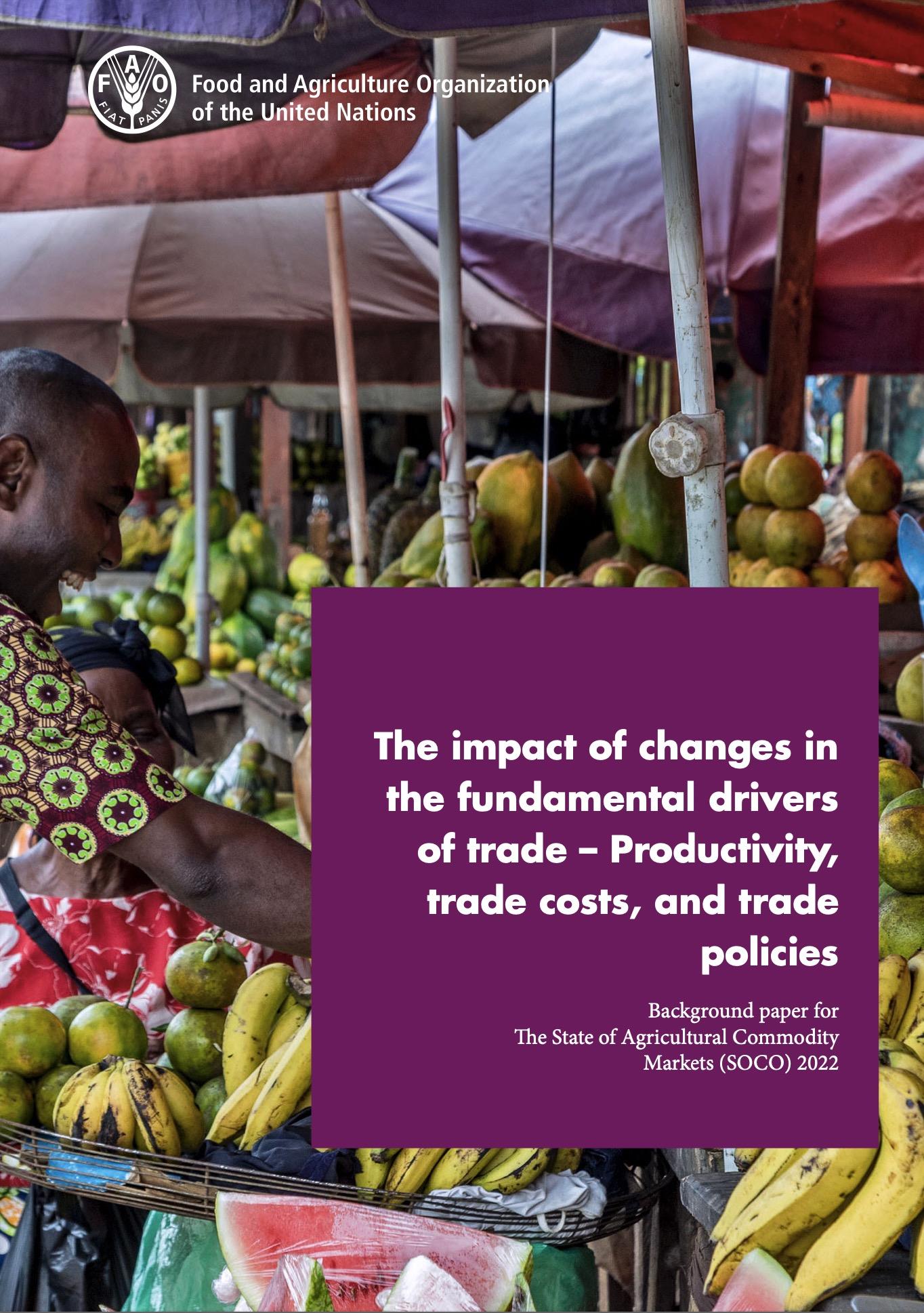
The impact of changes in the fundamental drivers of trade – Productivity, trade costs, and trade policies
28/11/2022
Countries’ varying natural resource endowments are vital in explaining international trade. Traditional trade theory suggests that differences in technology and factor endowments lead countries to specialize and export certain goods or services in which they have a comparative advantage.
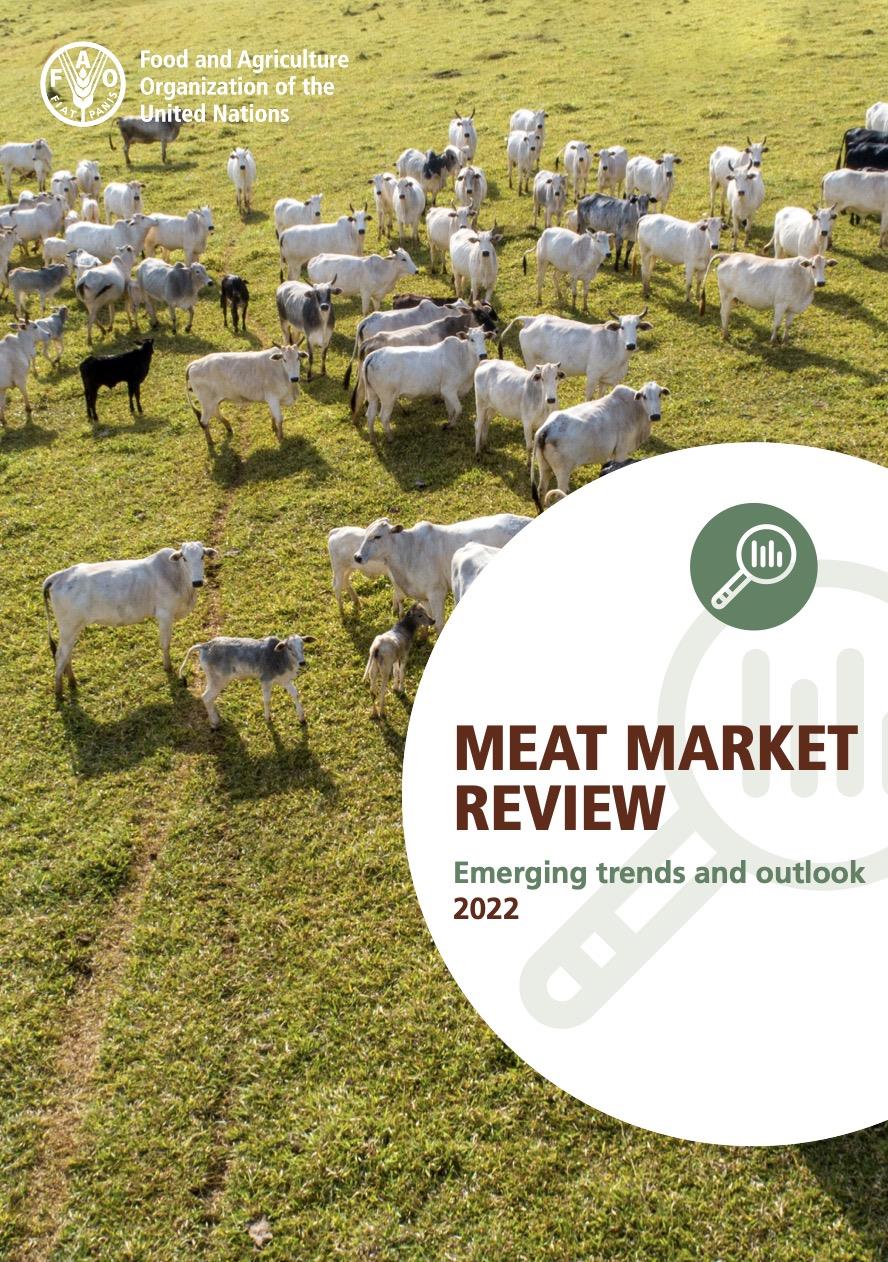
Meat Market Review - Emerging trends and outlook 2022
25/11/2022
The November issue of the publication summarizes the salient trends and market outlook in 2022. The international meat prices reached an all-time high in June 2022 amid tight global supplies. Moreover, global meat production in 2022 is expected to expand only moderately, constrained by animal diseases, rising input costs and extreme weather events. Meanwhile, world meat trade is likely to fall, weighed by a contraction in pig meat imports and economic slowdowns and downturns.
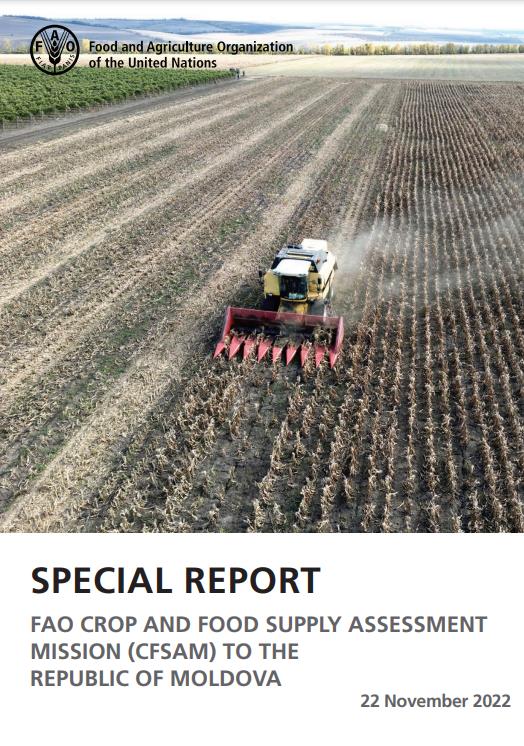
Special report – FAO Crop and Food Supply Assessment Mission (CFSAM) to the Republic of Moldova
22/11/2022
At the request of the government, an FAO Crop and Food Supply Assessment Mission (CFSAM) visited the country from 10 to 28 October 2022 to estimate the 2022 crop production and forecast the country’s import requirements during the 2022/23 marketing year (July/June). The mission’s aim was to provide an accurate picture of the severity and extent of the drought and high agriculture input prices that affected the agriculture sector in 2022 and to identify the support requirements to the sector until the next harvest in 2023 as well as the medium-term needs to strengthen agriculture resilience.
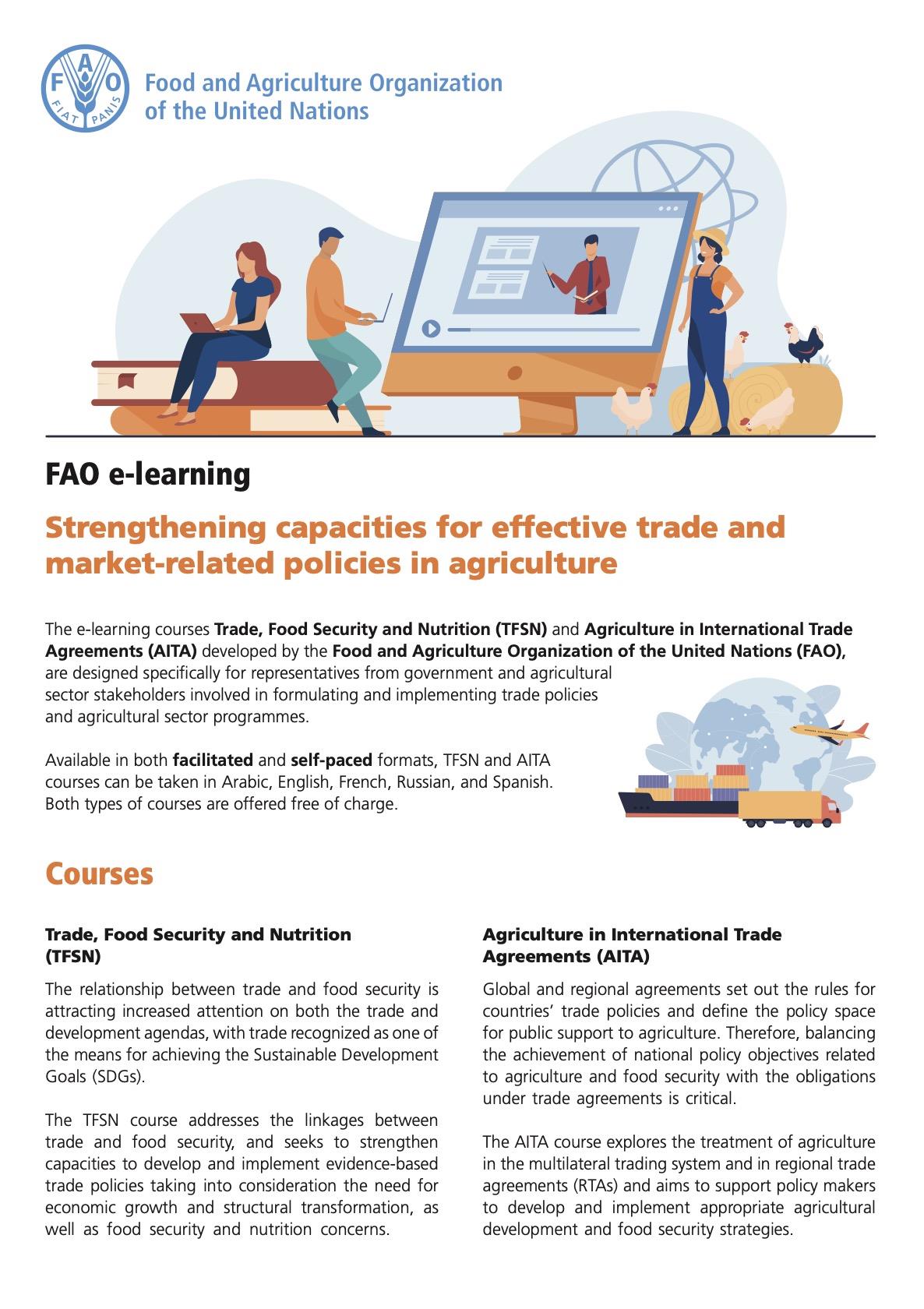
FAO e-learning - Strengthening capacities for effective trade and market-related policies in agriculture
17/11/2022
This brochure presents two e-learning courses offered by the Food and Agriculture Organization of the United Nations (FAO). The Trade, Food Security and Nutrition (TFSN) course addresses the linkages between trade and food security, and seeks to strengthen capacities to develop and implement evidence-based trade policies taking into consideration the need for economic growth and structural transformation, as well as food security and nutrition concerns. The Agriculture in International Trade Agreements (AITA) course explores the treatment of agriculture in the multilateral trading system and in regional trade agreements (RTAs) and aims to support policy makers to develop and implement appropriate agricultural development and food security strategies. Information about the courses and contacts for enrolment are provided in the brochure.
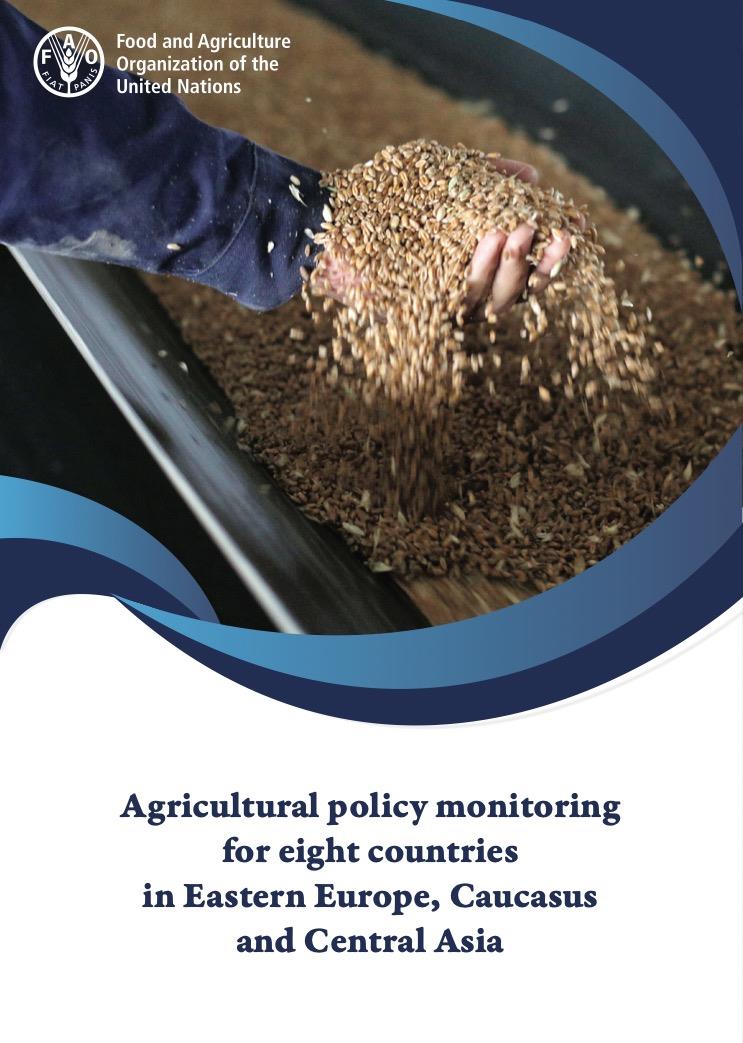
Agricultural policy monitoring for eight countries in Eastern Europe, Caucasus and Central Asia
17/11/2022
This study reviews the agricultural policy environment and provides quantitative indicators for policy incentives and disincentives to agricultural producers for key commodity value chains in the eight study countries in Eastern Europe, Caucasus and Central Asia (Armenia, Azerbaijan, Belarus, Georgia, Kyrgyzstan, the Republic of Moldova, Tajikistan and Uzbekistan).
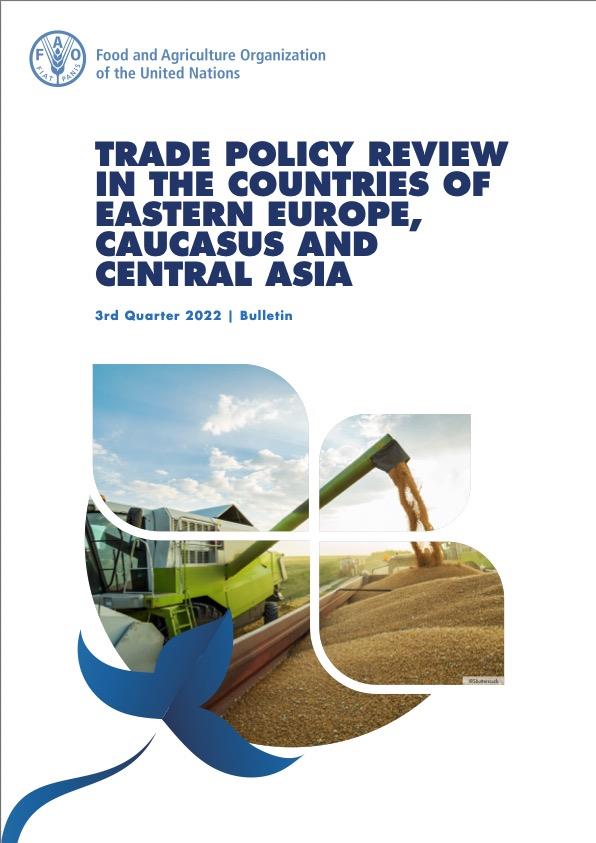
Trade policy review in the countries of Eastern Europe, Caucasus and Central Asia - 3rd Quarter 2022
16/11/2022
This quarterly bulletin features agricultural trade policy changes in the region. It provides current trade measures, agreements, statistics and articles by experts covering trade-related issues in countries across the region, and it is sent to members of the Agricultural Trade Expert Network.
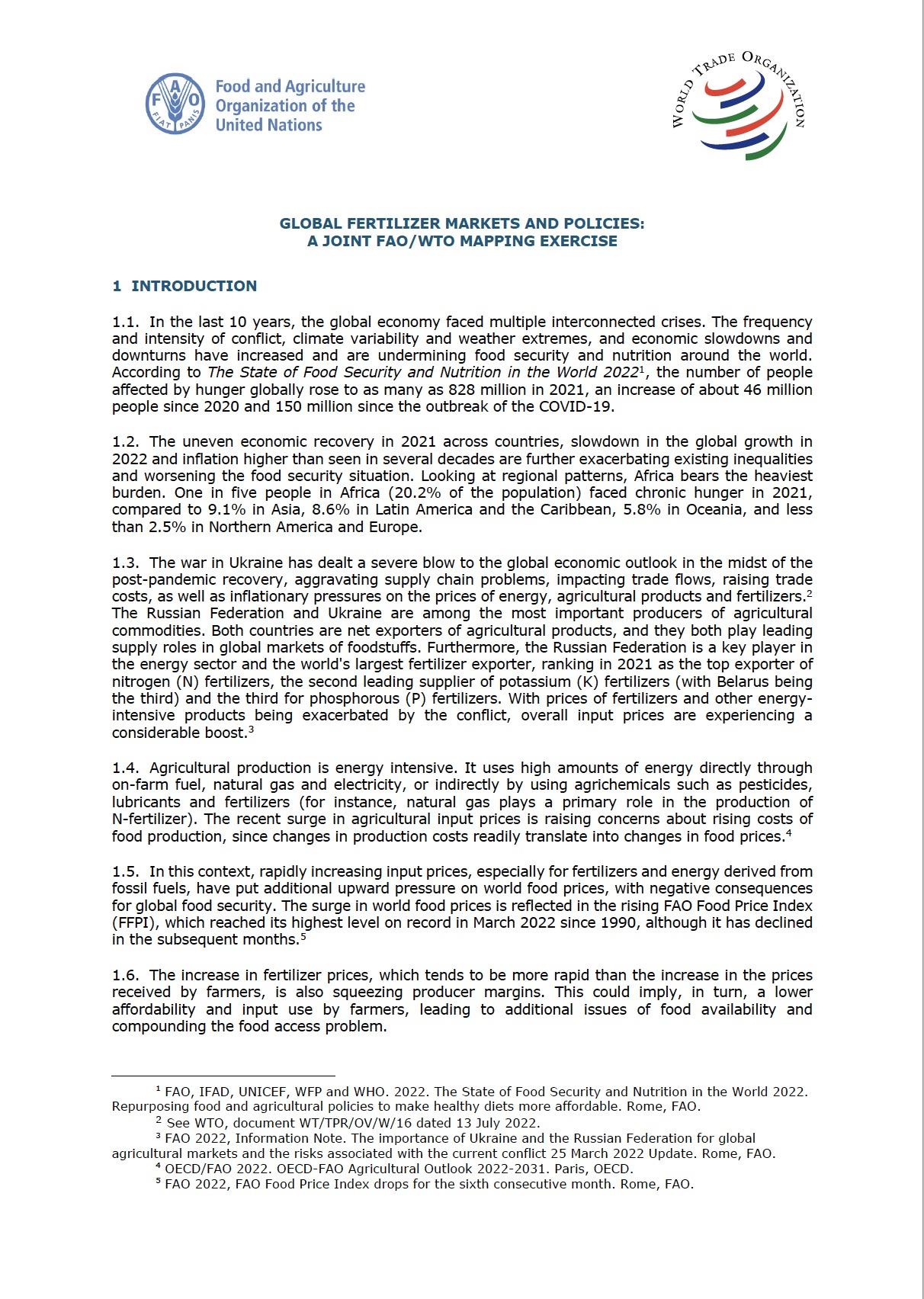
Global Fertilizer Markets and Policies: A Joint FAO/WTO Mapping Exercise
14/11/2022
FAO and WTO issued a report on fertilisers for the G20 Leaders to avoid a global food availability crisis.
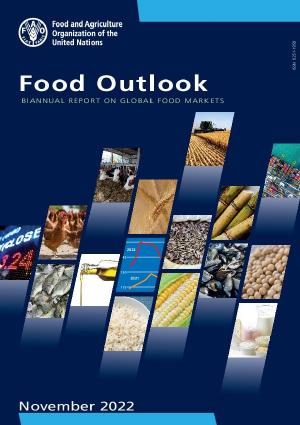
Food Outlook - November 2022
11/11/2022
FAO’s latest forecasts point to somewhat easing of market conditions for basic foodstuffs. However, increased climate variability, conflicts and geopolitical tensions, bleak economic prospects, soaring agricultural input costs and export restrictions continue to pose challenges to global food commodity market stability.
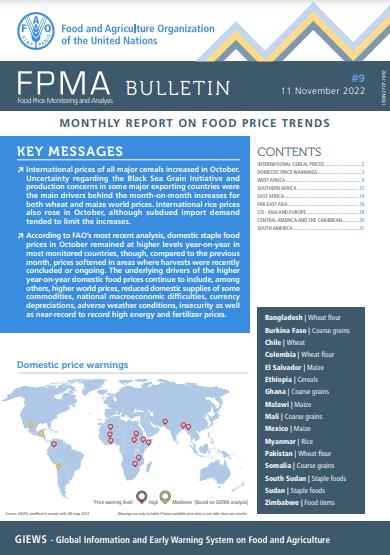
Food Price Monitoring and Analysis (FPMA) Bulletin #9, 11 November 2022 - Monthly Report on Food Price Trends
11/11/2022
International prices of all major cereals increased in October. Uncertainty regarding the Black Sea Grain Initiative and production concerns in some major exporting countries were the main drivers behind the month-on-month increases for both wheat and maize world prices. International rice prices also rose in October, although subdued import demand tended to limit the increases.
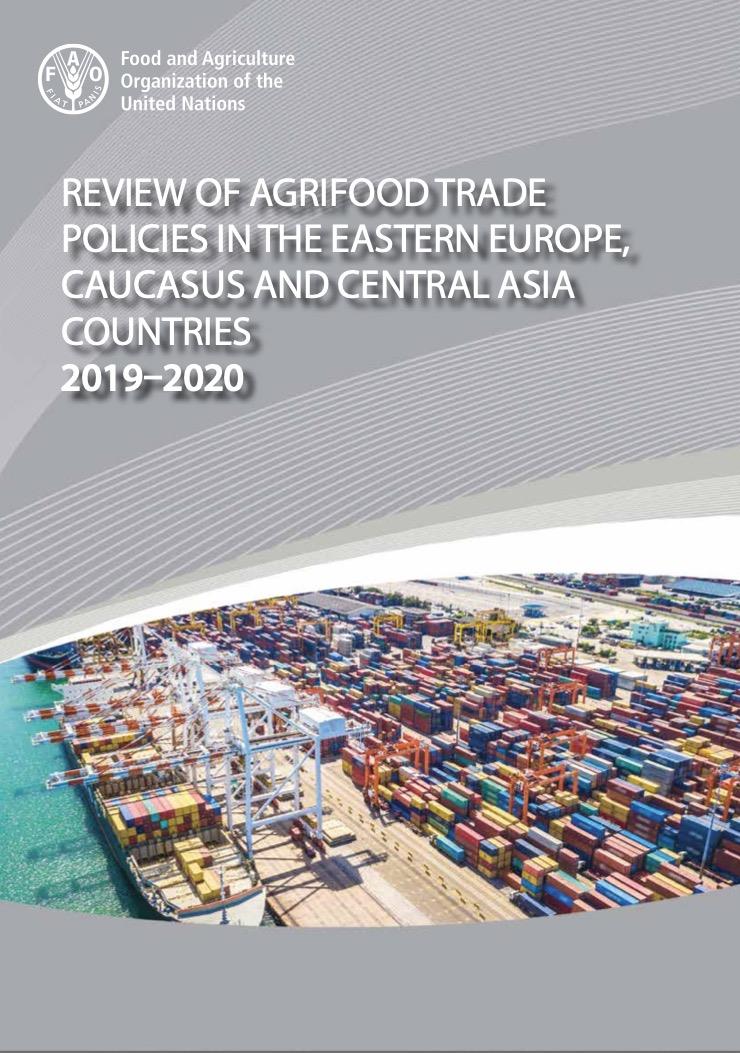
Review of agrifood trade policies of the Eastern Europe, Caucasus and Central Asia countries, 2019–2020
09/11/2022
This review is devoted to the analysis of the agricultural trade policy of the Eastern Europe, the Caucasus and Central Asia countries. The purpose of the review is to monitor the latest developments in the trade policies of these countries that have an impact on the dynamics and structure of trade.
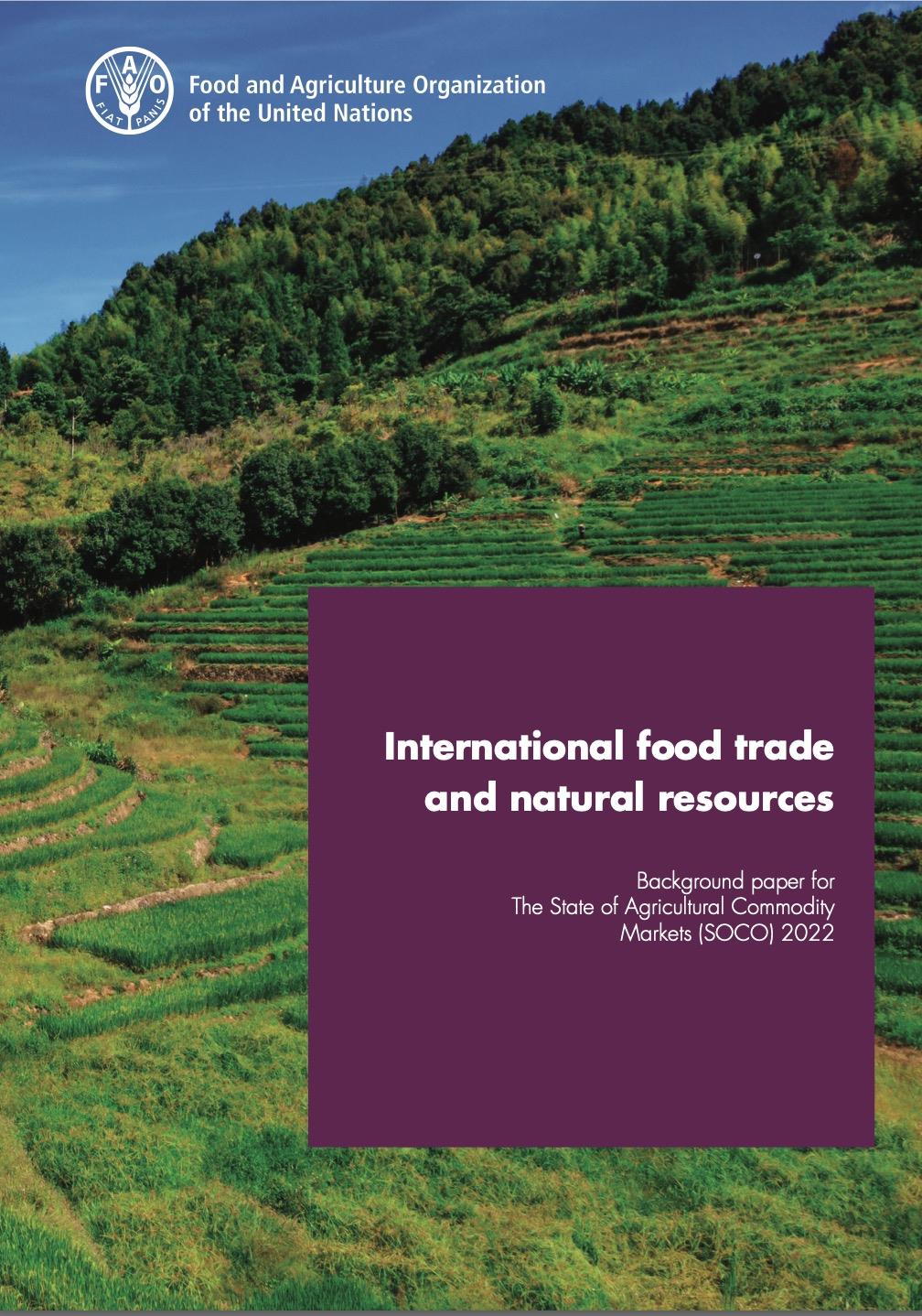
International food trade and natural resources
03/11/2022
The paper provides a review of the literature on the distribution of natural capital endowments across countries and its impact on determining trade flows. It illustrates the role trade plays in alleviating environmental pressures and the potential negative effects of trade on the environment. Finally, it discusses a range of relevant policy measures that can be adopted to reduce environmental spillovers
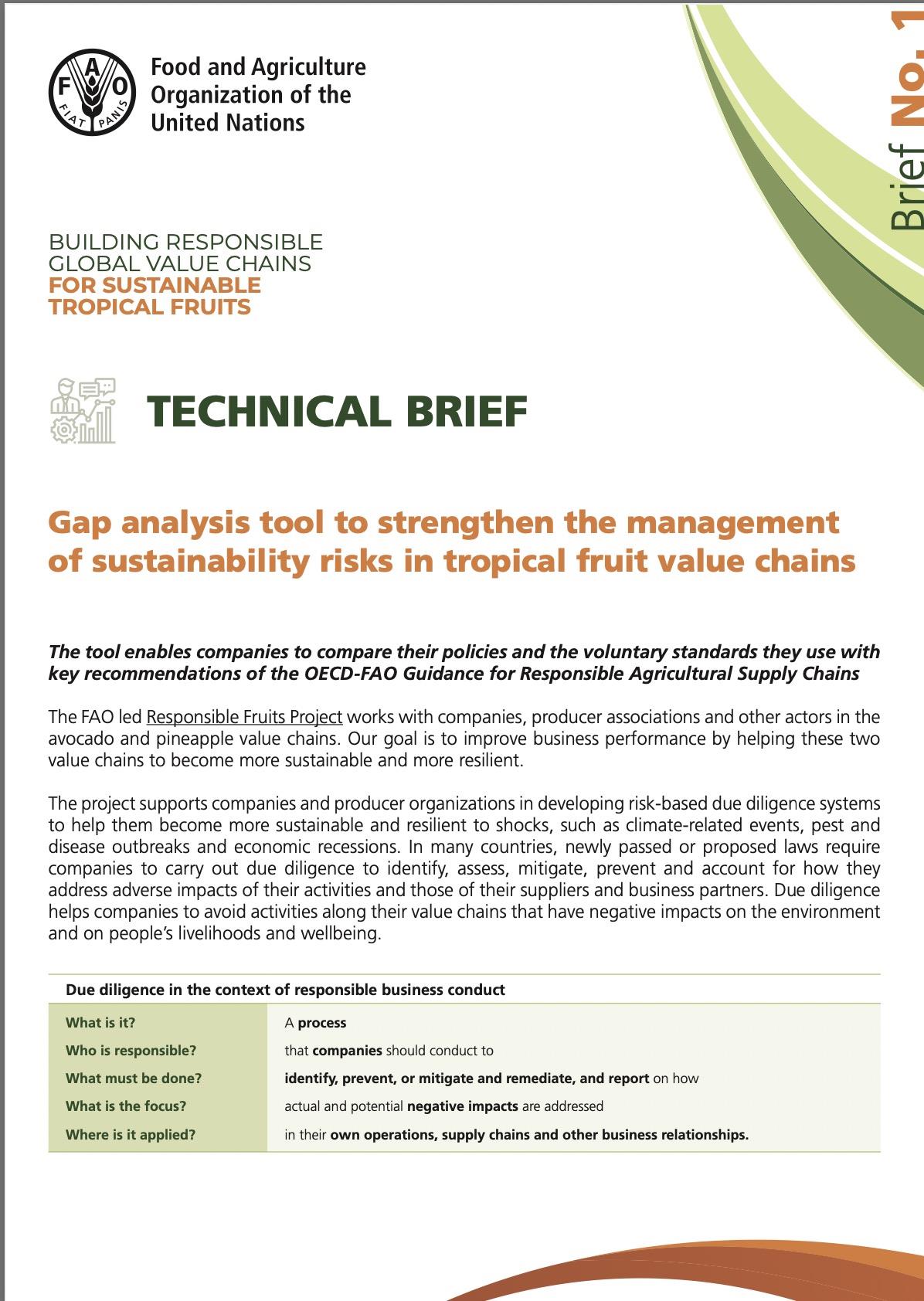
Gap analysis tool to strengthen the management of sustainability risks in tropical fruit value chains
27/10/2022
This technical brief describes a gap analysis tool that enables companies in the avocado and pineapple sectors to compare their policies and the voluntary standards they use with key due diligence recommendations of the OECD-FAO Guidance for Responsible Agricultural Supply Chains.
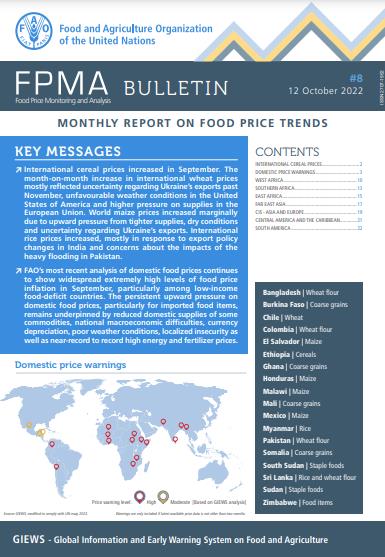
Food Price Monitoring and Analysis (FPMA) Bulletin #8, 12 October 2022 - Monthly Report on Food Price Trends
12/10/2022
International cereal prices increased in September. The month-on-month increase in international wheat prices mostly reflected uncertainty regarding Ukraine’s exports past November, unfavourable weather conditions in the United States of America and higher pressure on supplies in the European Union.

